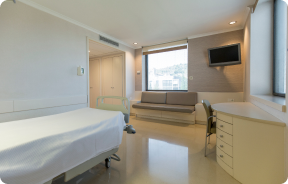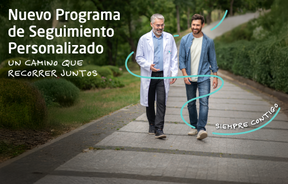

 Centro Médico Teknonen/health-centers/centro-medico-teknon
Centro Médico Teknonen/health-centers/centro-medico-teknon- Centro Médico Teknonen/health-centers/centro-medico-teknonHospital Universitari General de Catalunyaen/health-centers/hospital-universitari-general-catalunya
 Centro Médico Teknonen/health-centers/centro-medico-teknonHospital Universitari Sagrat Coren/health-centers/hospital-universitari-sagrat-cor
Centro Médico Teknonen/health-centers/centro-medico-teknonHospital Universitari Sagrat Coren/health-centers/hospital-universitari-sagrat-cor
Patellar tendinitis, also known as patellar tendinopathy or "jumper's knee," is a common injury that affects the tendon that connects the kneecap (patella) to the tibia.
Etiology:
Patellar tendonitis usually develops due to repetitive overloading of the patellar tendon. Activities that involve frequent jumping, such as basketball, volleyball, and track and field, may increase the risk of developing this condition. Patellar tendonitis can also occur as a result of:
- Chronic overload: Participation in activities that place excessive stress on the patellar tendon, such as running, jumping, climbing stairs, or repeated bending.
- Biomechanical malalignment: Factors such as improper leg alignment, flat feet, or high arches can increase stress on the patellar tendon.
- Muscle weakness: Lack of strength or flexibility in the leg muscles, especially the quadriceps muscles and hip muscles, can contribute to overloading the patellar tendon.
Causes:
Specific causes of patellar tendinitis may include:
- Acute or chronic overload of the tendon due to sports or work activities.
- Direct injuries to the knee.
- Sudden changes in training intensity or volume.
- Anatomical factors, such as the shape of the kneecap or the alignment of the legs.
- Inappropriate footwear or training surfaces.
Treatment:
Treatment of patellar tendonitis is usually conservative and may include:
- Rest and modified activity: Avoid activities that increase pain and swelling in the knee, such as running or jumping, and opt for low-impact activities, such as swimming or cycling.
- Physical therapy: Strengthening and stretching exercises to improve the flexibility and strength of the leg muscles, especially the quadriceps and hip muscles. Physical therapy may also include techniques such as ultrasound therapy or massage to help reduce inflammation and promote tendon healing.
- Hot and cold application: Apply ice to the knee for 15-20 minutes several times a day to reduce inflammation and pain. Heat can help relax muscles before stretching exercises.
- Anti-inflammatory medications: Using nonsteroidal anti-inflammatory drugs (NSAIDs), such as ibuprofen or naproxen, can help reduce pain and inflammation in the knee.
- Support and protection: The use of orthoses or bandages can provide additional support to the knee and help reduce the load on the patellar tendon during physical activity.
In severe or persistent cases of patellar tendonitis that do not respond to conservative treatment, it may be necessary to consider more advanced options, such as corticosteroid injection, platelet-rich plasma, extracorporeal shock wave therapy, or, in rare cases, surgery to repair the damaged tendon.



































